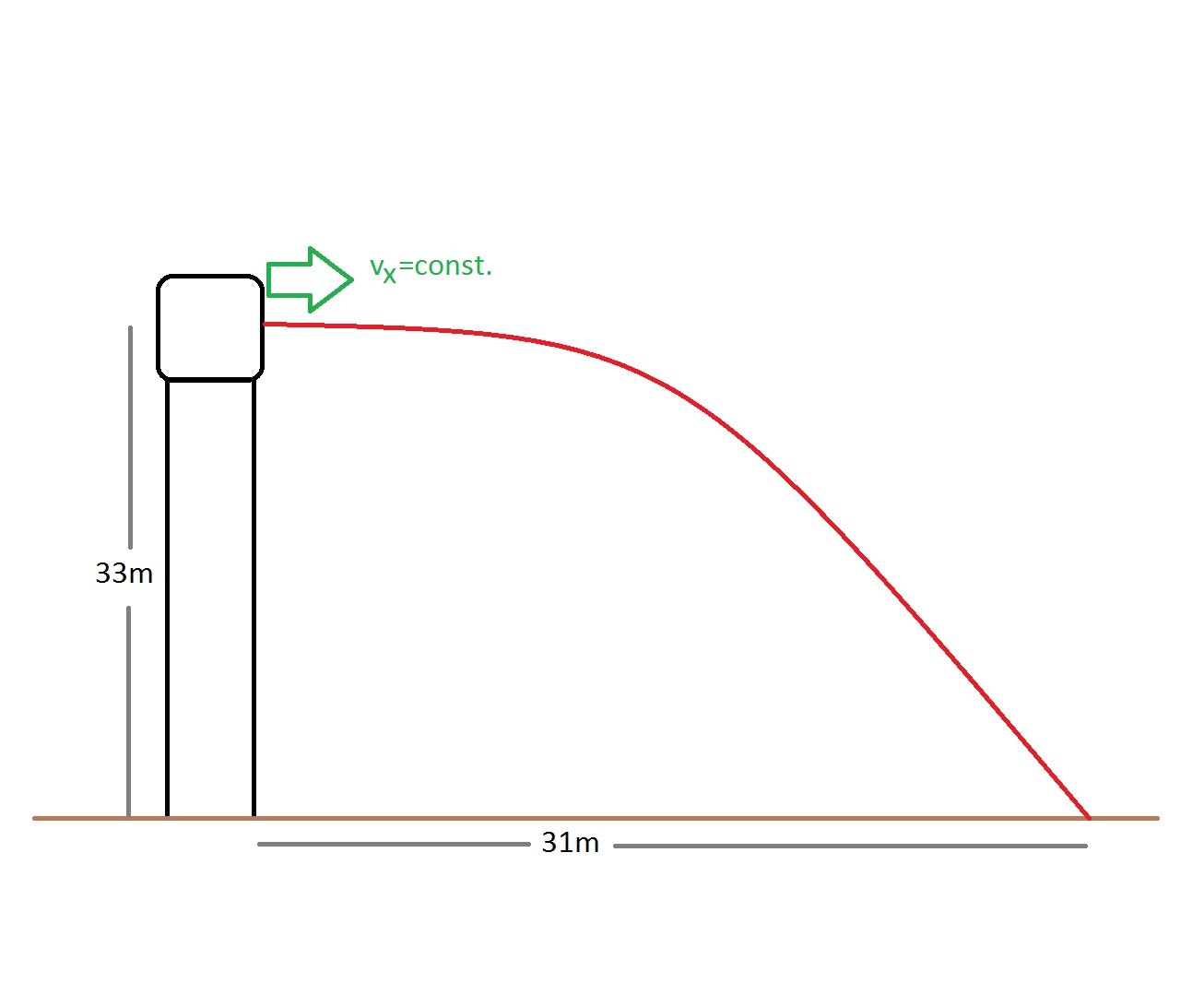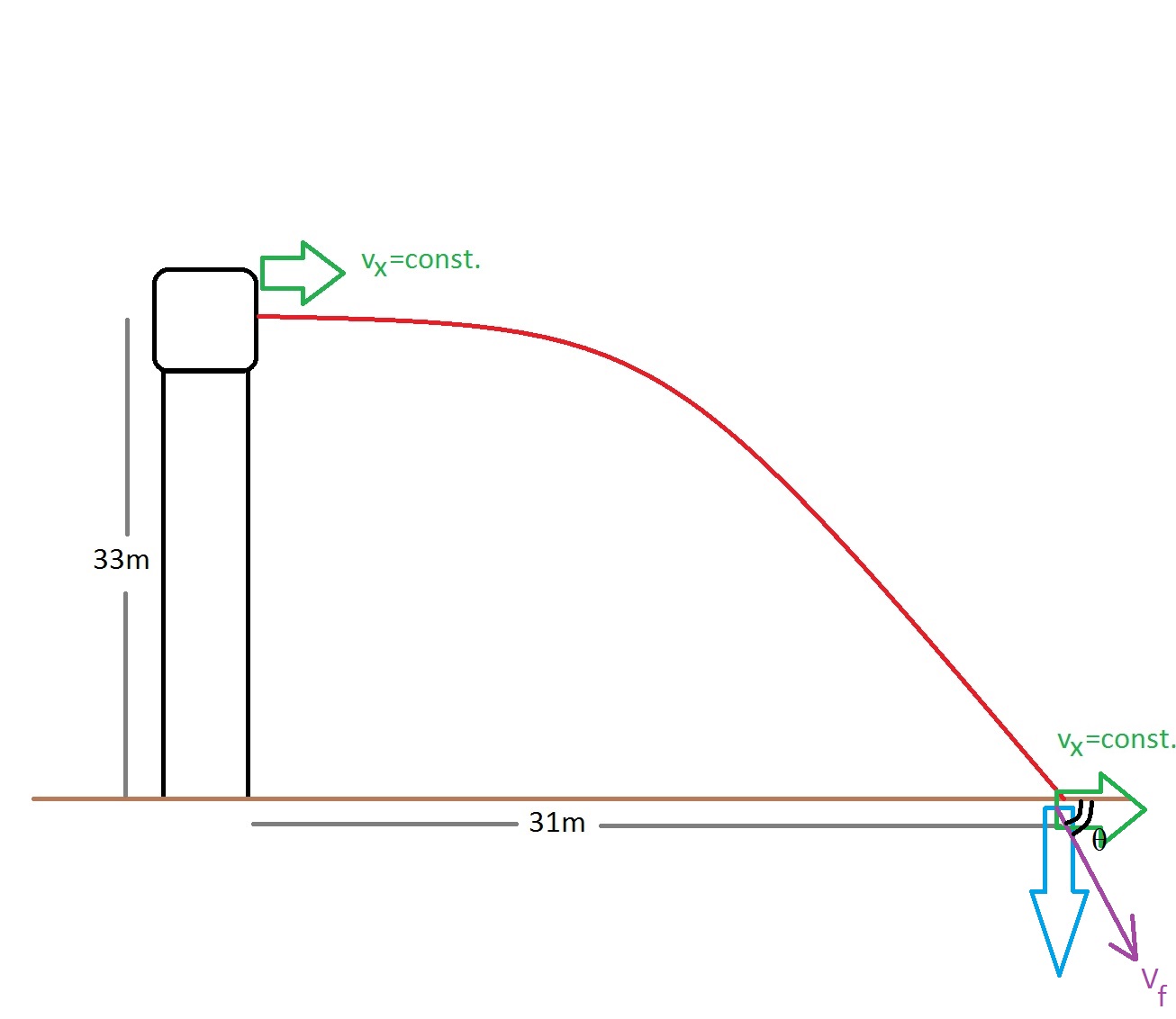An arrow is shot horizontally off of a tower that is 33m high. The arrow lands on the ground 31m from the base of the tower. How high above the ground was the arrow after 0.13s? What is the arrow's final velocity?
1 Answer
Have a look but check my maths!
Explanation:
Let us consider the diagram:

1) Vertically we have an initial velocity
or:
Using:
2) Horizontally the velocity is
Finally :
Final velocity of arrow:
at an angle of

When
using:

